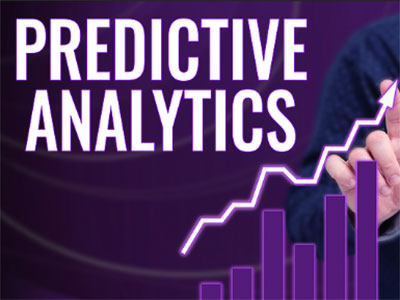In working across company sizes, industries, and geographies, in almost 20 years of business consulting, every single client without exception needed to better utilize data to improve customer service and bottom line results. Smart clients are turning data into insights so that they can pinpoint where to focus quickly.
Data Analysis vs Predictive Analytics
There is a lot of conversations about data analysis and predictive analytics. What is the difference? Data analysis is using data (from your ERP system, related technologies such as CRM (customer relationship management) and MES (manufacturing execution system) along with manual inputs and spreadsheets to analyze data to understand past performance, see future requirements, and make decisions. Predictive analytics takes it a step further and uses data to predict future outcomes. Both are essential for survival, let alone for growth and success.
Data Analysis
If your business is growing and profitable, you are performing data analysis. Resources are limited, high-skilled talent is scarce. For that reason alone, smart executives are using data to make decisions. No one can afford to fumble their way through daily execution and expect to have happy customers. On the other hand, very few clients have this down to an art. Unfortunately, data integrity issues abound, data sources do not align (misleading teams of people to focus on incorrect priorities), and executives can focus on the wrong information and reports (therefore wasting precious resources and time).
Client Example Using Data Analysis
Before you can leap to predictive analytics, you have to ensure your data is directionally correct and would lead you to reasonable decisions. Take an 80/20 approach in reviewing, updating, and analyzing data. For example, we are working with an industrial manufacturer on a supply chain consulting project to develop a production schedule, evaluate capacity constraints and rapidly provide realistic projected ship dates to customers and resurrect service levels, and data was at its cornerstone. The client went live on a new ERP system a month before we started working with them and were struggling to sift through the data to provide answers on customer orders. Although they had several high-skilled resources working 24/7 to figure it out and determine order status and availability, they were drowning in data with no way out. They couldn’t work through the data integrity issues and lack of viable information to make sense of sales orders in order to schedule work orders, review capacity, and ship orders.
Thus, we had to jump into the abyss of data, determine which fields were directionally correct, which fields to prioritize, who owned which fields, and who knew how to address which issues. Also, we had to determine which sales orders reconciled to the ones on the schedule, in the production area, on the heijunka board, and which had materials available, which had shipped, and which orders had data issues and were stuck in the system so that we could determine where to start. If we had waited for each of these data integrity issues to be resolved, our customers would have left. Instead, we prioritized, made assumptions to refine the data, reconciled critical data, and addressed the largest issues quickly. Although it took longer than expected, we took a six month task, and completed it within a few weeks with this approach. Data analysis was paramount to getting to the point where we could communicate dates. Refer to our article, “Cleansing, Connecting & Consolidating Data to Support SIOP/ S&OP and a Superior Customer Experience” for additional examples and solutions.
Predictive Analytics
As your data starts to provide directionally correct information for decision-making, smart clients are moving towards predictive analytics. It makes sense to look forward instead of backwards when making decisions. In essence, transitioning from reactive to proactive from a data standpoint can provide valuable visibility for making strategic decisions for demand and supply. Data is often integral to the SIOP (Sales Inventory Operations Planning) processes as you forecast future customer needs, evaluate capacity and production sourcing options, and assess logistics capabilities to serve customers.
At its core, demand planning / sales forecasting uses predictive analytics. Depending on your process and technologies utilized, you can be performing simple forecasting or using advanced predictive analytics. The outcome is to forecast what your customers will need in the future. Listen to our podcast interview with WBS for more insights on this topic. From a capacity planning viewpoint, it makes the most sense to look forward and project capacity using predictive analytics. For example, if you can use recent performance of an item or work center to predict run rates and downtime, it will yield a far better result than referring to a standard set the year before. Depending on the sequence of items and the machine performance, the output can vary widely. This is especially relevant in engineer-to-order businesses as similar combinations and/or setups are difficult for a person to remember. Taking it a step further, as production starts running, it is better to look forward and predict machine breakdowns, thereby resolving those issues before they occur than incurring downtime with preventative maintenance.
Predictive analytics is gaining momentum in business circles as executives prefer to look forward instead of to the past. Thus, according to Statista, the predictive analytics market revenue worldwide will grow from $5.29 Billion in 2020 to $41.5 Billion in 2028.
The Bottom Line
Data can make or break your business. Clients that utilize data for strategic insights and to proactively manage the business achieve far higher customer performance with higher profitability. On the other hand, those clients that get caught up in their shorts can let data negatively impact the customer and bottom line. Which approach will you use?
Continue reading on this topic:
Achieving Customer Growth by Turning Data into Insights



